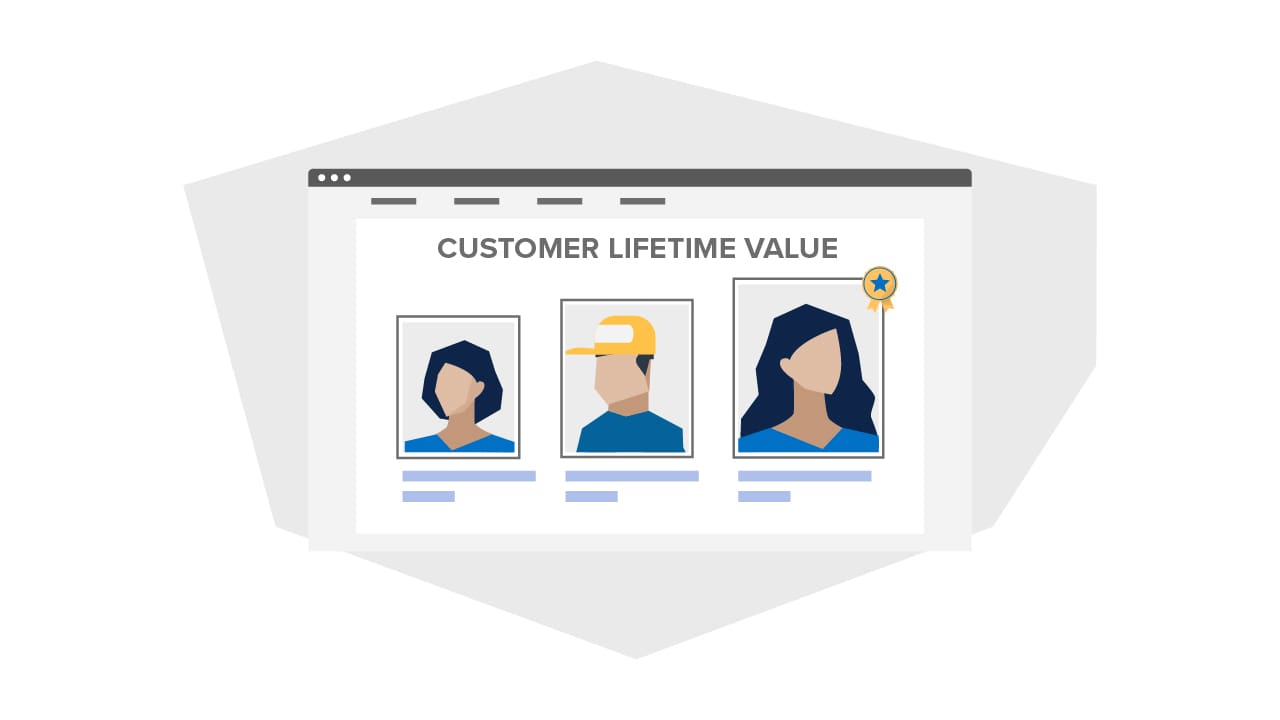
What is Customer Lifetime Value (CLV) and Why is it So Critical in eCommerce?

Who would you pick: a customer who purchases one high-ticket item from your site, but never returns, or a customer who makes hundreds of smaller purchases from you over the course of 10 years?
The answer is simple: In most cases, you’d pick the person who buys from your site repeatedly. Not only is the sum of their transactions often greater than the single item, but their customer loyalty is also a major advantage.
However, to understand if you’re attracting repeat customers, you need to track your customer lifetime value (CLV). In this blog, we’ll discuss how to do that and what you can do to increase your CLV.
What is customer lifetime value (CLV)?
CLV is a measurement indicating how much money customers are likely to spend on your brand during their lifetime.
For instance, a person who buys a Subuaru as his or her first car may initially pay $25,000. But, as s/he grows older and earns more spending power, s/he may upgrade to fancier models — or purchase multiple Subarus for the family — and wind up spending another $40,000 to $80,000 on Subaru cars over the years. The driver’s CLV could be as much as $105,000.
In another case, the average meal kit subscriber may only stick with the subscription box for six months (the duration of a temporary diet) and have a much lower CLV.
In both situations, CLV helps you to predict customer behaviors and understand when or why purchases drop off.
The relationship between CLV and CAC
CLV also plays another critical role: it acts as a compass for your company in terms of helping you decide how much to invest in attracting new customers versus retaining existing ones.
For this reason, CLV tends to go hand in hand with customer acquisition cost (CAC). If the estimated CLV for a customer is $300, you wouldn’t spend $500 in ads to acquire customers exactly like him or her.
In other words, you don’t want your CAC to exceed your CLV because you’d lose money on that relationship.
How to calculate CLV
The formula for CLV can be simplified to…
CLV = Average purchase value x average number of purchases x average length of customer relationship in years
That said, CLV calculations can vary from business to business, and by cohort. For example, if you own a subscription business where you deal with more predictable “contracts” than a typical eCommerce business, you likely should factor in churn rate (i.e., CLV = Average monthly recurring revenue per user / churn rate).
Your formula may grow more sophisticated over time as you account for changing market conditions (which could impact your prices) and new customer behaviors, among other variables. The simplified formula above gives you a place to start, but certainly isn’t prescriptive or all-encompassing.
5 Ways to improve CLV
In most cases, your time (and money) is better spent convincing existing customers to repurchase from your site as opposed to finding, nurturing, and acquiring new ones. With this in mind, here are five ways to increase CLV.
1) Make it easy and enjoyable to purchase from your brand
A whopping 68% of customers defect from a brand because of a bad customer experience — and the blame doesn’t fall squarely on customer support. A bad customer experience can result from inaccurate product descriptions, poor return policies, and/or slow shipping. Take time to audit the customer experience from start to finish and address any inefficiencies in your operations. Check out your site, too, to make sure it’s easy for customers to explore your whole catalog and add items to their shopping carts.
2) Launch a loyalty program
One of the most effective ways to earn repeat business is to offer an incentive. A loyalty program does just that by providing rewards or special discounts based on a user’s engagement with your brand. Loyalty programs can simultaneously motivate your best customers to refer their friends, or repeatedly choose your brand over a competitor by fostering relationships and/or creating the feeling of exclusivity.
3) Use customer surveys to learn buyer preferences
Customer surveys can return valuable insight straight from the source. Rather than guessing the reason behind a low CLV, for instance, you can ask your customers directly what they like or dislike about your products and/or site. Aside from creating a better customer experience with this feedback, you can build goodwill by showing you care.
4) Retarget customers
Keep your brand top of mind by leveraging retargeting (aka remarketing) ads. Fortunately, retargeting ads on Google, Facebook, Instagram, and other channels tend to be relatively cheap. With them, you can serve ads to people who’ve already visited your site or made a purchase from you once before.
5) Use emails and SMS strategically
Don’t underestimate the power of these everyday communication channels. Ninety-nine percent of email users check their inbox every day, while SMS marketers see impressive open rates of 82% on average. Using either or both platforms, you can inform your customers of new product launches, special deals, or products they may be interested in as opposed to waiting around for them to discover those things on their own.
Wrapping up — What is the importance of customer lifetime value?
CLV is what makes an eCommerce business resilient, and future-proof. Having high customer lifetime values indicates you’ve found the right product-market fit, you’re meeting and exceeding customer expectations, you’re providing a great buyer experience, and your products are worth coming back for.
